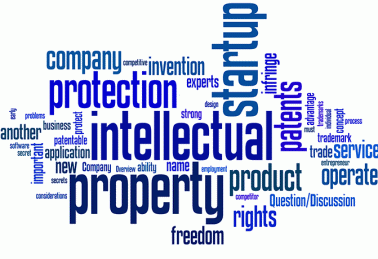By Louis-Pierre Gravelle (Link) and Cliff Pavlovic, PhD (Link)
With the growth of the knowledge based economy, value of a company will be increasingly formed by its intangible assets, such as intellectual property (IP) and know-how. It is estimated that, currently, 70% of the valuation of companies is comprised of these type of assets (The Telegraph, January 2017), and that trend is not likely to stop.
There is also a push for open-innovation and using open-source tools, allowing for easier research and development, and being accessible at a much lower cost than using proprietary solutions. This in turn leads to the creation of even more intellectual property and know-how, which can be provided via very accessible licensing terms (such as the use of Creative Commons Licensing) or by hiring the right people (as showcased by the generous salary conditions of Twitter’s head engineer, at over $10 million USD a few years back; Link).
In places like Montreal (Quebec, Canada), the knowledge-based economy is booming, especially in sectors such as artificial intelligence. Research and development is well-funded through investments (via industry players such as Facebook and Google as well as the Federal government) combined with a vast talent pool that can be recruited, creating a boom. Add to this the investors who focus on the quality of teams and getting to market fast, due to an everchanging technological landscape, and we are in an impressive confluence of economic growth and innovation.
However, this boom of growth and innovation is focused on the short-term, not necessarily with a long-term perspective, even going so far as having a “let the good times roll” attitude.
And within this perspective, intangible assets such as IP are overlooked until needed, when market forces require it. Admittedly, this does not seem to be a problem in the present, but something to think of when the time comes. Even know-how can be taken for granted, which may be expensive now, but with more qualified persons being trained over the next few years to take advantage of this economic cycle, the cost will go down (by simple supply and demand).
In this context, what happens with intangible assets a few years down the road? Without an IP strategy in place from the early stages, short term vision (facilitated by a substantial influx of funds from various sources) puts into peril long-term growth and value creation.
Currently, valuations and IP protection are not considered for the upstarts in the AI world, since funds are readily flowing into the knowledge-based economy. Firstly, this confuses the concept of true value (which is created over time) with money being injected in businesses (the mantra of “the value of the project/company is whatever someone is willing to pay right now” with the present moment being very lucrative). Secondly, this also ignores the IP that is being created in this cycle, the actual building blocks of future value within the knowledge-based economy, whether it is being protected (in a casual fashion) or not. In other words, following the attitude of protecting when the market requires it or when a competitor just might be breathing down your neck, appears to be a reactive attitude to take if you are creating new markets or causing paradigm shifts, rather than a proactive attitude..
Currently, funds are easily available, whether governments and business leaders are aware or not, to help build the foundations of new industries in specific sectors of the economy, and not there as a means to make quick money or attract more so-called easy money. And what are these foundations? Intangible assets such as know-how and intellectual property, such as patents.
Some observers have opined that we are in a bubble, and that this bubble will burst at some point. The easy money will dry up. Once that occurs, what will the current slew of companies have in terms of assets? Know-how (i.e. people) will leave to the highest bidder and any unproperly protected IP will be snapped up. Who will be the winners? Those who took the time to have a robust IP strategy in place at the earliest time.
A real-world example of this is an often-used example: Apple. During the last economic downturn, the company increased its R&D spending and its acquisitions (Link). Why? Through all the business jargon and reports, there lies an IP strategy, an IP strategy aligned with their business strategy. This paid off in the long term, since Apple is legitimately a world-class market leader, with a solid IP portfolio, spanning patents, industrial designs, trademarks, copyright, as well as know-how and trade secrets.



